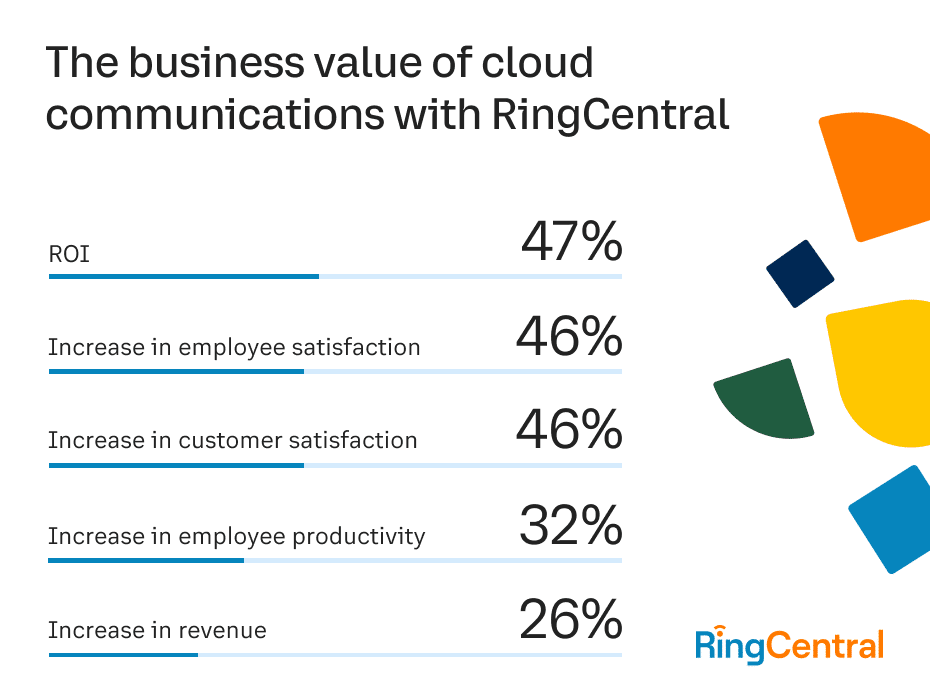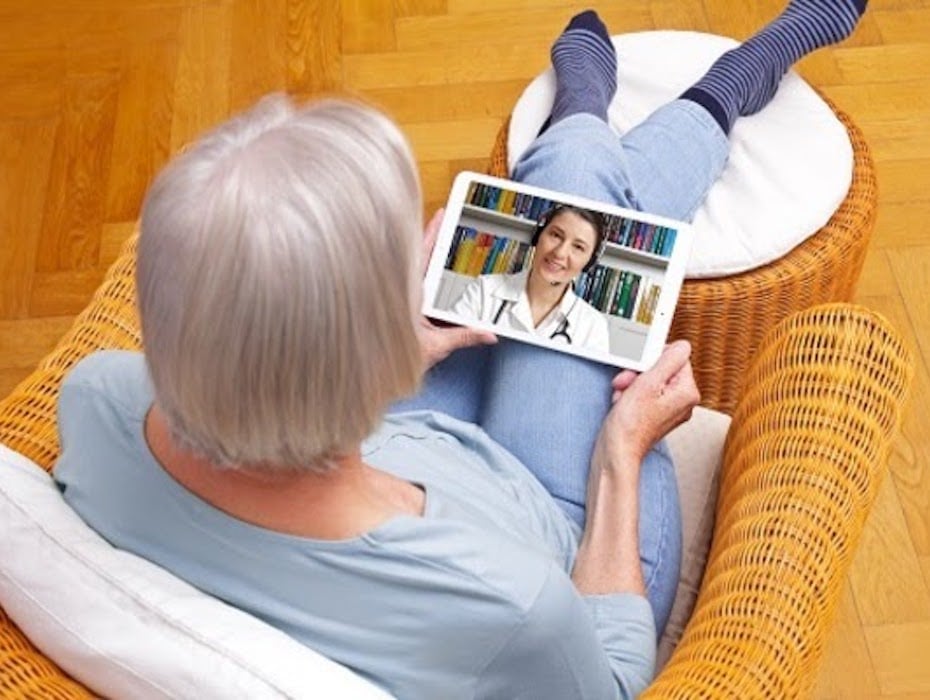Healthcare is becoming more accessible and user-friendly as organizations expand to offer telemedicine services. But these new delivery channels also carry risks that can erode the patient experience, privacy, and increase the risk of burnout among healthcare workers—all areas that can be improved upon by implementing an all-in-one cloud-based communications platform, a new survey of RingCentral healthcare customers shows.

Healthcare customers on RingCentral’s business value
RingCentral recently surveyed more than 500 customers from the U.S., Canada, and the U.K. to gain insights into the business value they gained from their deployment and utilization of our communications and collaboration platform. For healthcare customers, the improvements measured to patient satisfaction, staff productivity, and point-of-care efficiency, patient satisfaction and experience, and staff productivity can all help to deliver on the promise of virtual care models.
46% increase in patient satisfaction
In healthcare, patient (customer) satisfaction and experience are about more than spend and loyalty: Better patient experiences and satisfaction can help to improve people’s access to healthcare as well as their outcomes. From the improved ease of scheduling appointments to an improved ability to communicate with clinicians, RingCentral helps to reduce pain points throughout the care continuum, improving the patient experience.
32% increase in staff productivity
Many healthcare organizations employ numerous solutions from different providers to meet their clinical and administrative needs for in-person and remote care services. But employing different solutions for phone calls, video appointments with patients, messaging, and other functions creates bottlenecks and silos (not to mention the increased security and privacy risks of ePHI exposure from each different solution). These collaboration tools improve workflow efficiency and uncomplicate access across dispersed multidisciplinary teams.
RingCentral customers report that utilizing a single solution with integrated functionalities increases workflow efficiencies that fuel improvements across all endpoints, from basic admin to complex transition of care workflows within acute settings to specialty referrals across ambulatory providers.

These productivity gains are particularly significant in healthcare, where every minute matters both for patients and providers. When healthcare leaders improve staff productivity, patients get discharged faster and average length of stay (ALOS) is reduced. Even if the reduction is 30 minutes per patient, an acute provider can realize hundreds of thousands of dollars more in annual patient revenues.
27% faster workflow deployment
Nearly a third of survey respondents indicated that they achieved greater point-of-care workflow efficiency with RingCentral solutions deployed. Why is this important? Clinical teams require agility at the point of care to coordinate care planning—including complex transition of care workflows within acute settings or specialty referrals across ambulatory providers. To accomplish this, these teams need an integrated communications solution—a solution that addresses broader collaboration demands that are required outside of the EHR or other clinical applications.
Unlocking better healthcare via the cloud
The end of the pandemic doesn’t mean the strain on healthcare providers is lessening. In fact, the opposite is true. Although telehealth is appealing to consumers and offers huge potential upsides for providers, the virtualization of care requires careful consideration of the technologies and processes that will be used as support.
As RingCentral Healthcare Industry Principal, John Poli outlines, “According to our discussions with Healthcare Providers across the industry, we see the ability of our clients to transform their workplace and drive Innovation in their Administrative Operations and Care Management Services.”
Poli continued:
The RingCentral platforms provide the foundational flexibility to drive optimized solutions that improve Patient Experience as well as provide the capabilities to Customize delivery that best fits the staff and professional delivering care.
At the same time, there are new challenges on the horizon. Healthcare faces a massive staffing shortage in the coming years. By the year 2030, staffing experts predict there will be a deficit of almost 105,000 doctors in the U.S. Two-thirds of executives at hospitals with over 1,000 employees are currently dealing with a shortage of nurses, or expect to within the next three years. There are simply not enough qualified candidates to fill the gaps.

An opportunity to address new challenges
But RingCentral customers like ChenMed, which operates primary care practices for seniors in Florida, Georgia, Illinois, Kentucky, Louisiana, Pennsylvania, and Virginia, are finding that our all-in-one communications and collaboration platform is helping them to address the new challenges they face.
Says Hernando Celada, ChenMed’s CIO:
There really isn’t another platform like RingCentral that seamlessly integrates all of an organization’s communications in one solution.
“Our number one priority is to provide excellent patient care, and we’ve achieved this through improved patient communications,” Celada says. “RingCentral plays a mission-critical role in helping us build strong relationships with the patients we serve, while also allowing us to keep their information confidential and secure in accordance with HIPAA. We also found RingCentral’s platform to be completely seamless with its integrated contact center solution and open platform APIs to customize workflows.”
A closer look at the RingCentral advantage
With results that encompass 18 key business metrics, there’s much more to unpack from our customer success survey. In this #CustomerSuccess blog series, we take a closer look at the results and explore some of the specific improvements seen across key business segments and within industry vertical markets.
To learn more about the gains healthcare organizations stand to realize from deploying RingCentral, download our new Customer Success Metrics Survey datasheet now, and discover the workflow and cost efficiencies and other improvements our customers report.
Originally published Jul 06, 2021, updated Nov 03, 2023





